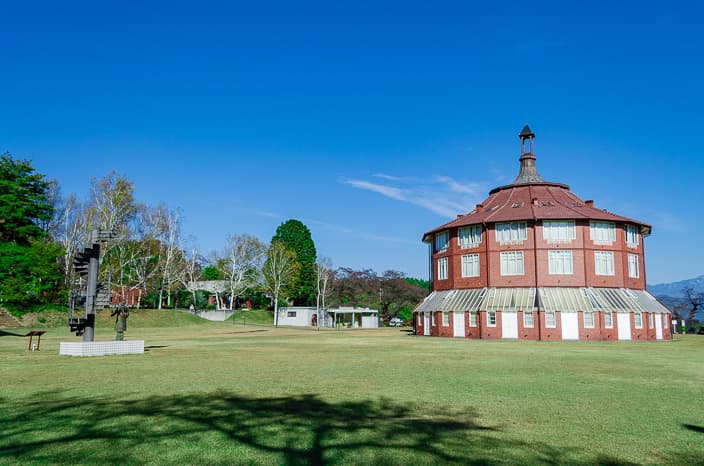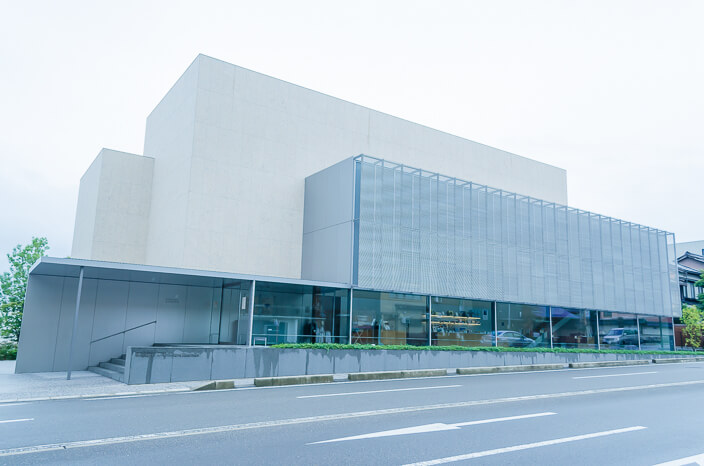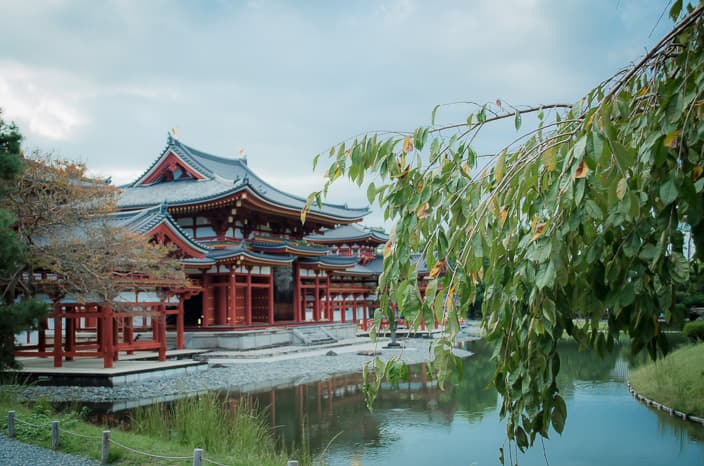Tadao Ando, Yoshio Taniguchi, Terunobu Fujimori, Hiroshi Sugimoto – these names may sound familiar to those interested in architecture and art : they are all leading architects and artists in Japan.
Did you know that there is a place in the Japan Southern Alps, where the works of these eminent creators come together in an environment rich in nature, overlooking the Yatsugatake Mountains and the Kai Komagatake Mountains?
In this article, I would like to introduce you to the Kiyoshun Art Colony, a must-visit spot when you are in the Kobuchizawa area of Yamanashi Prefecture.
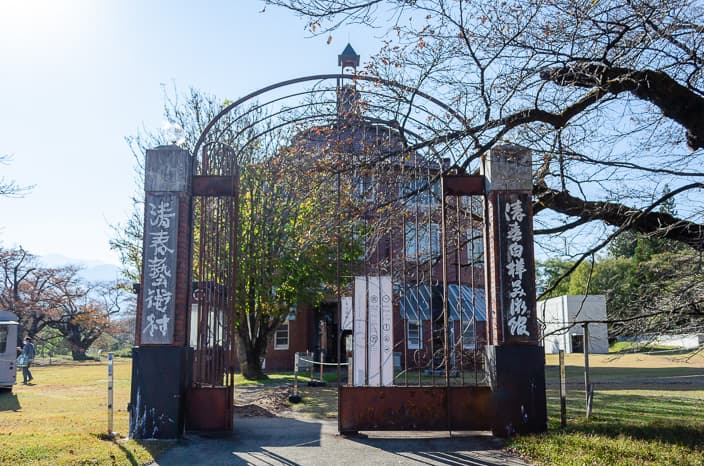
More than 30 years have passed since the colony opened, but it is still evolving. The Kiyoshun Art Colony was started by reviving the name of the place once called “Kiyoharu”, which is no longer marked on maps, as a place for artists to create and interact.
The founder of the colony was Chozo Yoshii, one of Japan’s leading art dealers, known for introducing modern and contemporary French paintings such as Rouault, Picasso, and Chagall to Japan, as well as introducing Japanese artists such as Ryuzaburo Umehara and Kaii Higashiyama to Europe. Mr. Yoshii spent his personal fortune to create an art village as a place for international exchange, and the result is the Kiyoharu Art Colony. In 2007, he was awarded the Commandeur de l’Ordre des Arts et des Lettres (French National Order of Merit) in recognition of his achievements in building bridges between Japanese and Western cultures.
Then, let’s see what is in the Kiyoharu Art Colony.
La Ruche / Gustave Eiffel (1980)
La Ruche was the first facility to be built in the Kiyoharu Art Colony. It was designed by Gustave Eiffel, the designer of the Eiffel Tower, the symbol of Paris, and is a reproduction of the wine pavilion at the 1900 Paris World’s Fair. The actual wine pavilion was later moved to Montparnasse in Paris, where famous painters such as Chagall and Modigliani were based. This building in the Kiyoshun Art Colony was built after Mr. Yoshii bought the blueprints, and still functions as an artist’s residence.

Kiyoharushirakaba Museum / Yoshio Taniguchi (1983)
Built in 1983, the Kiyoharushirakaba Museum was designed by Yoshio Taniguchi, the designer of the Museum of Modern Art (MoMA) in New York and GINZA SIX. Mr. Yoshii, who was a close friend of the Shirakaba movement artists like Saneatsu Mushanokoji and Naoya Shiga, had a strong desire to create an art museum dedicated to the Shirakaba, a dream of his coterie of artists for many years. It took a whopping 65 years from conception to finally complete this museum.
Currently, the permanent exhibition includes ceramics, Buddhist art, and self-portraits from Naoya Shiga’s collection, as well as lithographs by Van Gogh and a reproduction of “Sunflowers of Ashiya”.
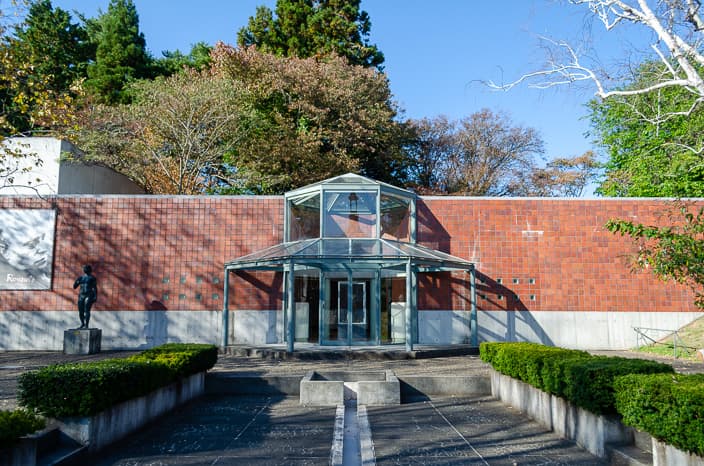
Rouault Chapel / Yoshio Taniguchi (1986)
The Rouault Chapel, also designed by Yoshio Taniguchi, was built on the same site as the Kiyoharushirakaba Museum. Inside, you can see the stained glass “Bouquet” created by Georges Rouault (a 19th-20th century French painter classified as a Fauvist) and the Christ Crucifixion painted by Rouault himself. These were donated by the Rouault Foundation in gratitude for spreading European modern art in Japan.
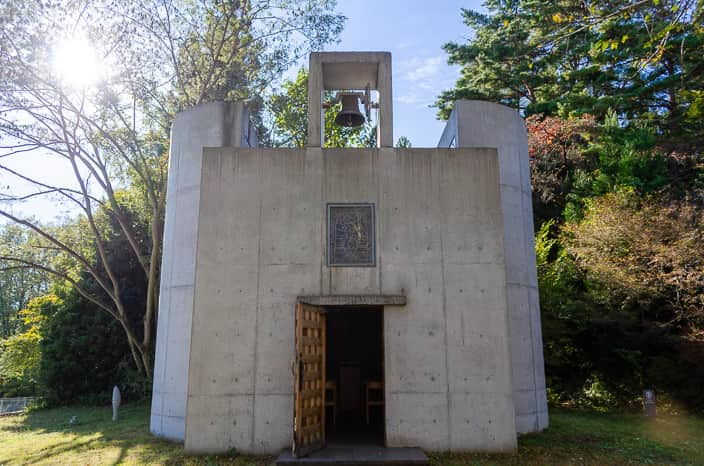

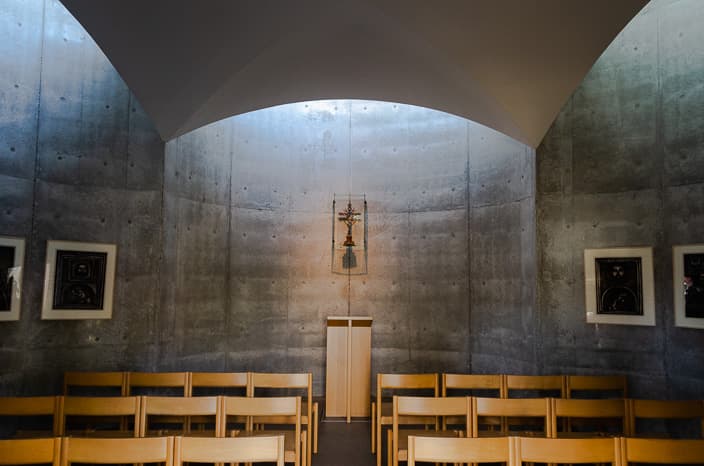
Museum of the Light / Tadao Ando (2011)
Built in 2011, this inorganic, concrete building, typical of Tadao Ando, is the newest addition to the Kiyoshun Art Village. The museum has no artificial lighting, only natural light. The light peeking through the slits in the walls and the gaps in the ceiling glass shows different expressions depending on the season and time of day.
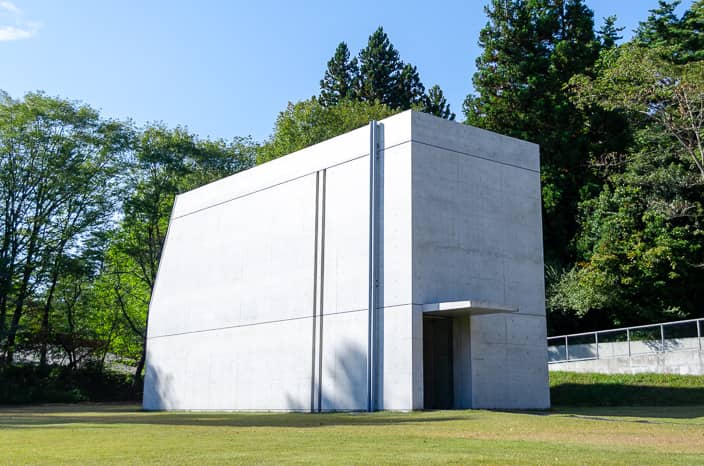
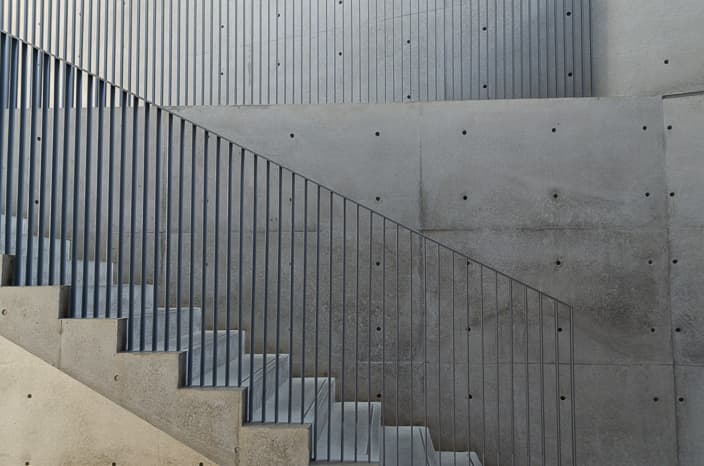
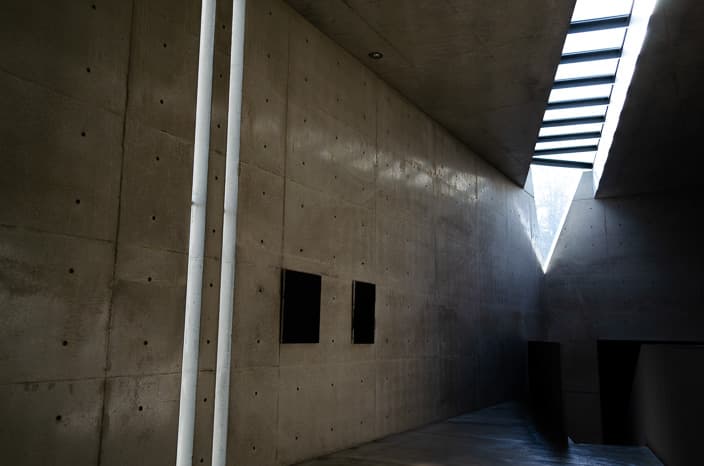
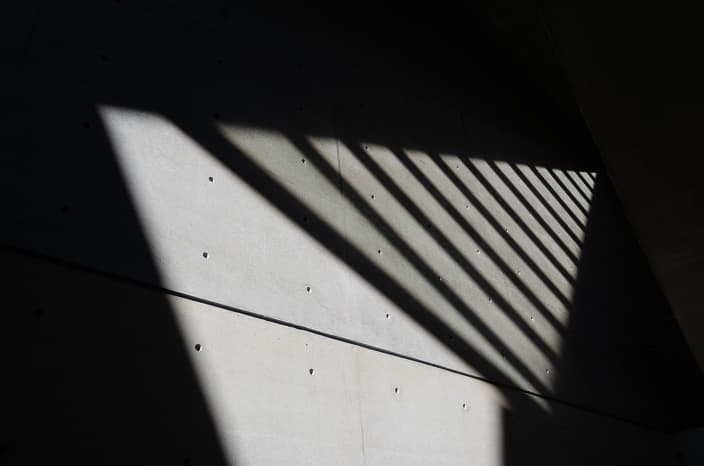
Tearoom Tetsu / Terunobu Fujimori (2006)
This tree-house-like building is actually a teahouse. It is the work of Terunobu Fujimori, who is known as the architect of the ancient “Jomon architecture” for his style. The cypress that supports the 4-meter high tea house is made from 80-year-old cypress trees that were planted in the area. The interior is closed to the public, but you can actually make tea there.
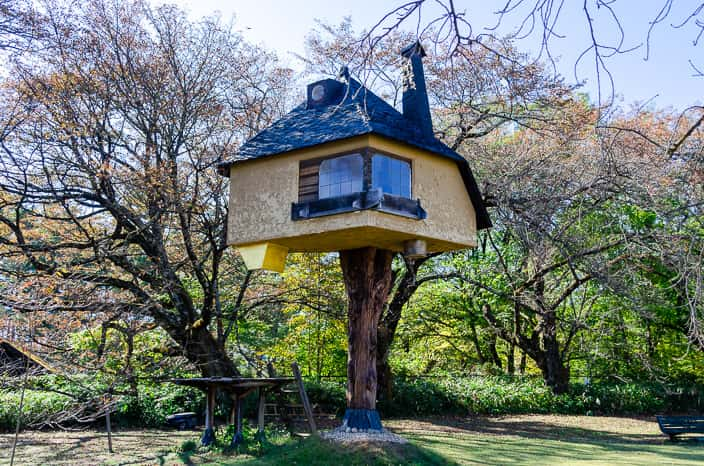
Eiffel Tower’s Staircase
A part of the Eiffel Tower’s Staircase was moved from France to the Kyoharu Art Colony in 1989, on the occasion of the 100th anniversary of the completion of the Eiffel Tower. Standing next to it is a statue of Eiffel by contemporary artist Cesar.
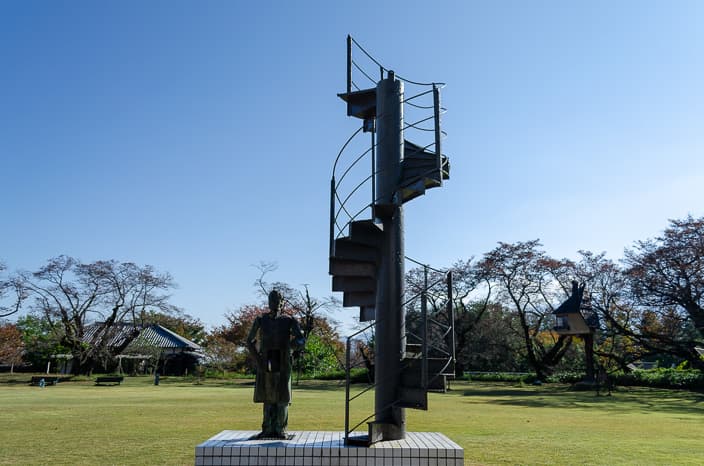
In addition to those I mentioned, there are other architectural and artistic works that you should see, so please visit and see them for yourself. Here is a map of the Kiyoharu Art Colony.
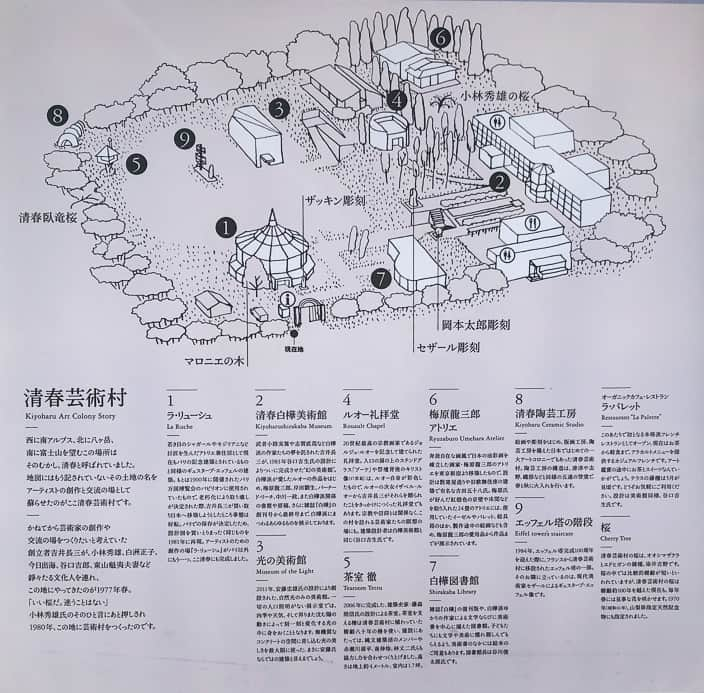
Adjacent to the Kiyoshun Art Colony is a guesthouse built by the New Material Research Laboratory (Hiroshi Sugimoto and Tomoyuki Sakakida), called “WASHIN” (closed to the public) and a restaurant named “stove” with interior design by Hiroshi Sugimoto. Stove offers creative French cuisine using carefully selected organic ingredients. I couldn’t try the restaurant this time due to time constraints, but it’s a place I hope to visit someday.

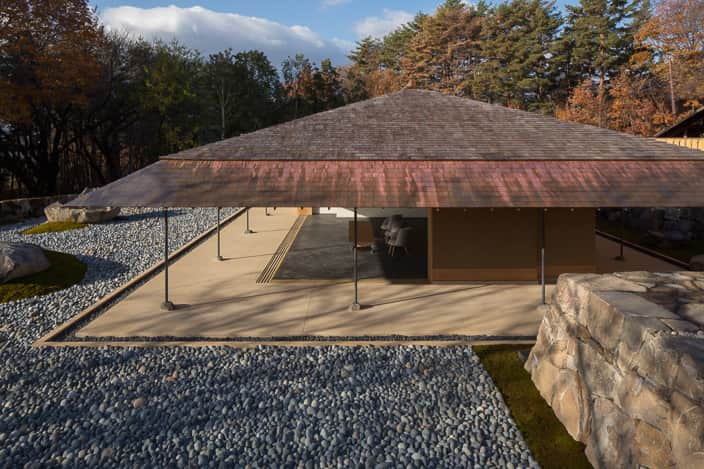
Kiyoharu Art Colony
| Address | 2072 Nagasakacho Nakamaru, Hokuto-shi, YAMANASHI |
| TEL | 0551-32-4865 |
| Open Hour | 10:00 – 17:00 (Last entry at 16:30) |
| Close | Mondays (or following day if Monday is a national holiday) New Year Holidays |
| Admission Fee | 【Adults】1,500 yen 【High School & College Students】1,000 yen 【Elementary & Middle School Students】Free * Includes admission fee for Kiyoharushirakaba Museum and Museum of the Light |
| Website | https://www.kiyoharu-art.com/ |
stove
| Address | 4552 Nagasakacho Nakamaru, Hokuto-shi, YAMANASHI |
| TEL | 0551-45-7703 |
| Open Hour | 【Lunch】12:00 – 15:00 (L.O. 14:30) 【Dinner】18:00 – 21:30 (L.O. 20:30) * Course menu only. By appointment only (3 days prior) |
| Close | Mondays, Tuesday (if it’s a national holiday, the restaurant will be opened / There is a substitute holiday) Winter vacation (holidays) |
| Website | http://www.stove-kiyoharu.com/index.html (Japanese Only) |

